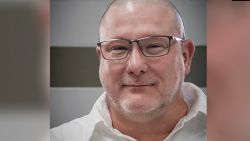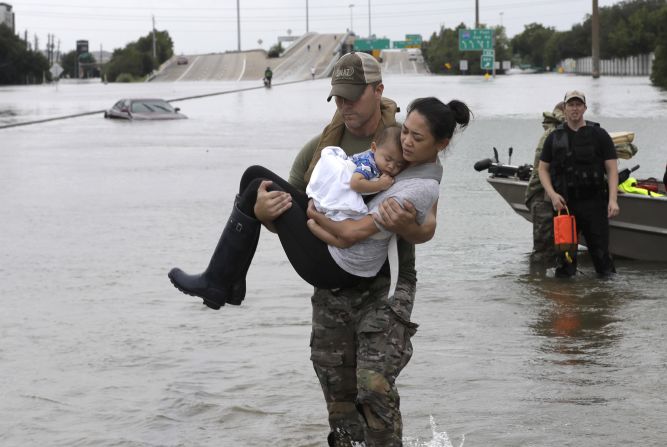Two days after Hurricane Harvey made landfall in Texas in August 2017, as historic rainfall submerged parts of Houston, the Army Corps of Engineers released water from two reservoirs into a river running through one of the country’s richest zip codes.
The water crept out of Buffalo Bayou and into West Houston’s Energy Corridor, home to numerous energy companies and residential neighborhoods.
It inundated Kyle Haines’ home, drowning his 71-year-old husband, Bob. It left Maria Sotolongo’s home nearly uninhabitable and set her on a costly road to rebuilding that would test her marriage.
Two years later, they’re still trying to recapture the sense of security that was swept away with their possessions. On top of that, they’re embroiled in litigation over the Corps’ role in what happened to them.
Hundreds of West Houston property owners are suing the federal government, claiming the Corps flooded their homes to save the rest of the city. They allege the government owes them for effectively taking their property to store water from the reservoirs, in violation of a Fifth Amendment right which says the government can’t take private property for public use without just compensation.
But the government doesn’t see it that way.

The Corps referred questions about the litigation to the Department of Justice, which declined to comment. But in legal briefs, government lawyers blame the storm for the flooding.
They claim the Addicks and Barker dams and reservoirs did their job and that the damage could have been worse if not for them. They say the government’s responsibility to protect the public in an emergency trumps the plaintiffs’ rights to their property.
“The Court should conclude here, as a matter of law and based on the undisputed facts, that to prove causation Plaintiffs must show that if the flood risk reduction Project had not been built, their properties would have flooded significantly less or not at all during Hurricane Harvey.”
And as the legal fight continues, so does the daily struggle to rebuild.
“This is not a ‘been there, done that’ kind of situation. We’re still struggling to recover,” said Marie Lynn Miranda, who oversees Rice University’s Hurricane Harvey Registry, which tracks the storm’s impacts on Houstonians.
“There are still people in Houston who are really having a hard time.”
He lost his love of 13 years
It’s not known exactly when Bob Haines died in the white ranch-style brick house at 754 Langwood Drive.
It took about five days after the first releases of water from the reservoirs for rescuers to deem conditions safe enough to retrieve his body. His death certificate says he was “found” on September 3, “submerged in flooded residence.” His cause of death is listed as drowning.
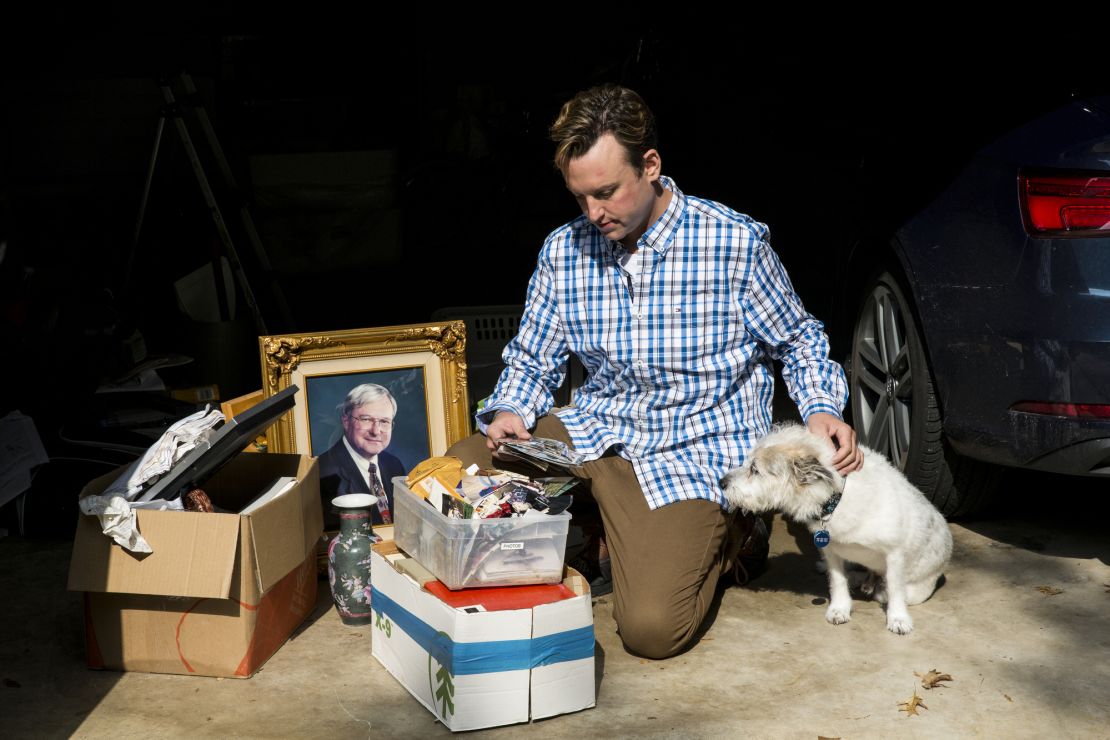
Three days later, when Kyle Haines visited the house for the first time after the storm, he knew he could never live there again. The waters had receded, leaving colonies of mold splayed across the wall, he said. The smell of rot penetrated his face mask, imbuing the house with an intractable sense of loss, he said.
Nevertheless, after settling in with relatives across town, he made regular visits to the home for months after. He would load his dog Paddi in his car and pick up a bouquet of flowers and a can of Foster’s, Bob’s favorite beer, on the way over.
Once inside the house, Haines would cue up one of his late husband’s favorite artists on his phone, usually Roy Orbison or the Mamas and the Papas. He would place the flowers on a spot in the bedroom where he believes Bob’s body was found, take a seat on the floor and carry on conversations as if Bob were there.
“It was comforting to feel like I was with him,” Haines said.
Kyle met Bob at a bar in Montrose in 2004, a few months after Bob had moved into the house they would eventually share. When they met, Bob was 57 and nearing retirement after a successful career as a stockbroker.
Kyle was 21 years old, and lacking direction. Though he was put off by the age difference between them, Bob won him over with his persistence and the promise of a comfortable life.
They started a new chapter together despite objections from their families, Haines said. They weathered ups and downs stemming from the age difference and struggles with their own inner demons, he said.
“There was definitely some codependency and toxic behavior,” he said. “But I loved him. He was my teddy bear. You don’t stay with someone for 13 years if there’s no love.”
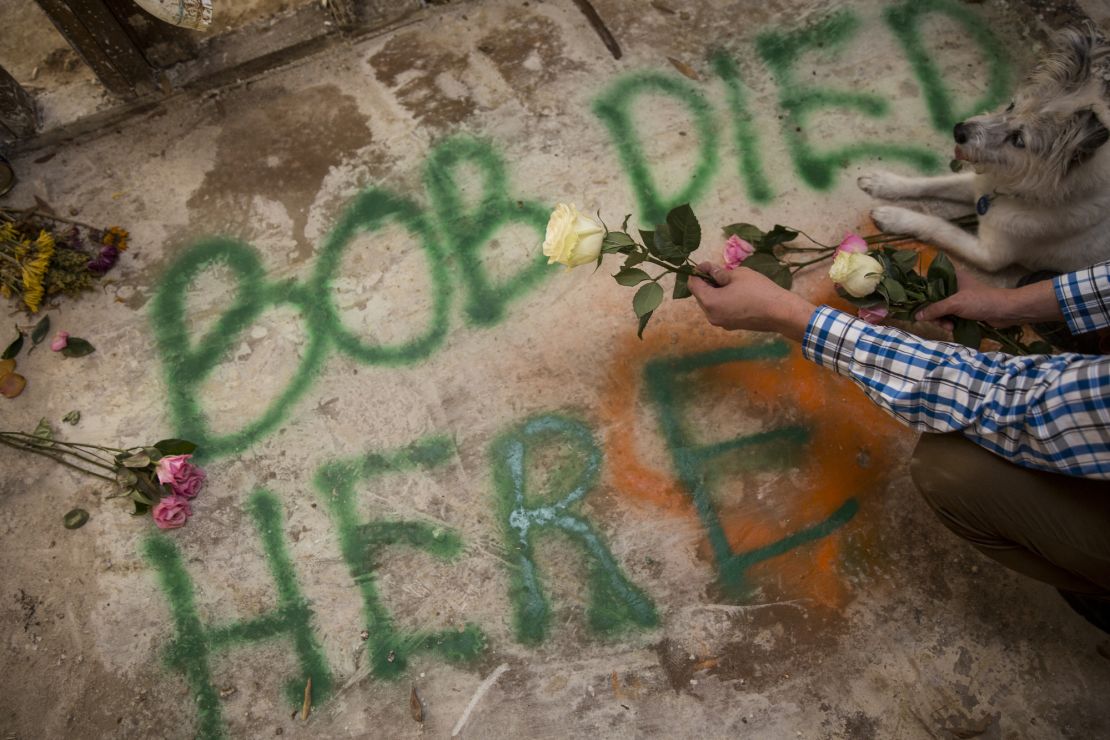
When Harvey made landfall in Houston overnight on August 25, Haines says he was in treatment for alcoholism, about an hour away in Galveston. Within 12 hours, Harvey was downgraded to a tropical storm, but rainfall continued, turning Houston’s roads into rivers.
The last time they spoke on the phone, on August 26 or 27, Kyle Haines says his husband was crying. He was fearful for Kyle’s safety on the coast and pleaded for him to come home. Thinking he had survived the worst of the storm, Bob did not seem worried about himself, Kyle says, especially since no evacuation orders had been issued.
Water released, but no evacuation orders
In the late afternoon of August 27, the Corps released a statement on social media saying they would “likely” have to release intermittent amounts of water from both reservoirs to reduce the risk of uncontrolled flooding in the Houston metropolitan area.
Based on what the Corps had said about the amount it intended to release, the City of Houston and Harris County did not believe evacuation orders were warranted, said Alan Bernstein, director of communications for the Houston Mayor’s Office.
As the city and county saw it, the intended releases would amount to street flooding, “which we don’t consider to be flooding that invades people’s homes and businesses,” he said.
To issue such a warning would have defied conventional wisdom, which recommends sheltering in place when water is the threat rather than directing a mass exodus of people onto the roads, where they will be more vulnerable to danger, he said.
At 1:36 a.m. Houston time on August 28, the Corps shared another statement on social media saying the releases would begin immediately.
The water surged through Buffalo Bayou, which carries water through West Houston and downtown Houston into the Houston ship channel. Later in the day, as rainfall continued and water levels in the reservoirs reached record highs, the Corps announced that releases would continue.
The flooding triggered rescue operations followed by voluntary evacuations of part of West Houston, then an evacuation order, Bernstein said.
The Corps later acknowledged that it ended up releasing more water than it initially said it would.
“The decision to make the increased controlled releases was a difficult, but necessary one that we did not take lightly,” Edmond Russo, Galveston District deputy engineer, said in a statement.
“We made them quicker than we would have preferred, because the Addicks pool rose faster overnight than we had forecast and the pool threatened our structures.”
To this day, Kyle Haines wonders if he could have saved his husband’s life if he had returned home when Bob asked him to. Because Kyle was in court-ordered rehab, he was worried about the consequences of leaving, in addition to being fearful of getting caught in the storm, he said.
Haines filed a wrongful death lawsuit against the Corps and Harris County Flood Control District in 2017 for his husband’s death, but a judge dismissed it for lack of subject matter jurisdiction.
In a letter to clients, Haines’ lawyer, Tony Buzbee, said the judge determined that HCFCD cannot be sued because it does not own the gates on the dam. Regarding the Corps, the judge said that it was insufficient to sue the Corps, and Haines had to identify the person who made the decision to open the gates, according to the letter.
The ruling felt like a “slap in the face,” Haines said. “Why does it matter who made the decision? My husband is still dead.”
Now he sees the property litigation as his last chance to get justice for his husband.
How the dams and reservoirs work
Houston has long been prone to flooding. In response to devastating floods in 1929 and 1935, Congress authorized construction of the Addicks and Barker dams and reservoirs in the 1940s as part of flood control efforts in the Buffalo Bayou watershed.
The project is managed jointly by the Corps, which oversees America’s infrastructure, and local authorities, including HCFCD, which declined to comment citing the pending litigation.
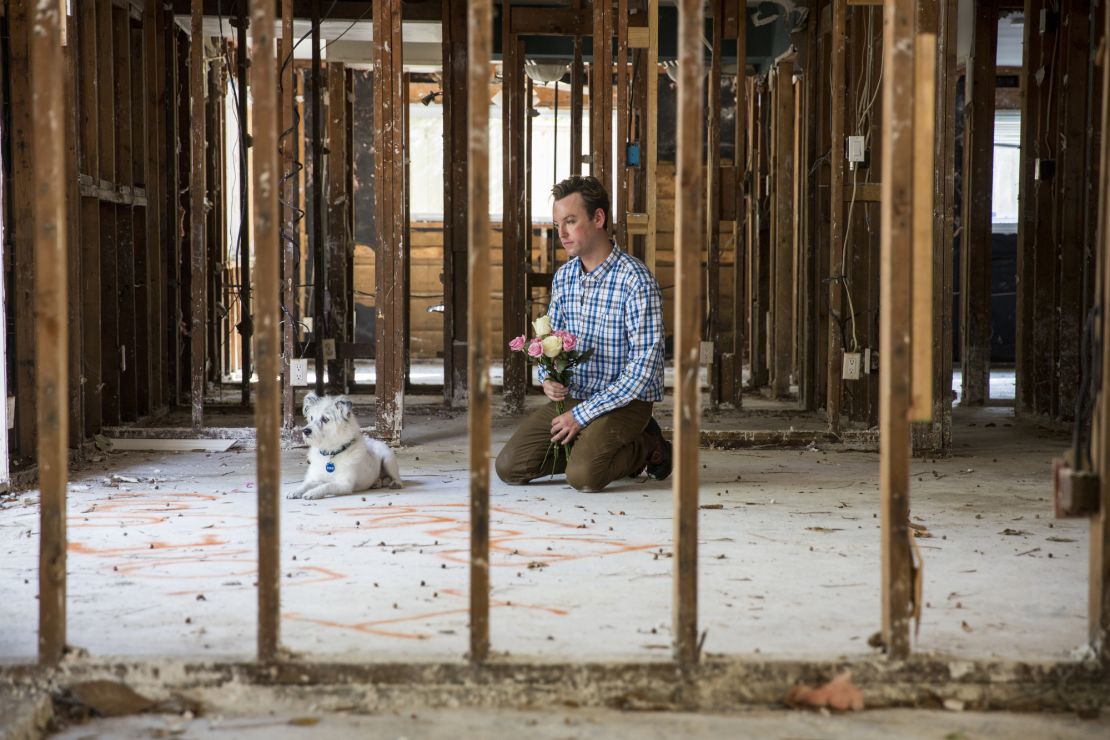
As urban development encroached upon the structures, the Corps made changes to minimize the risk of flooding. In 1963, they added gates to five conduits on each reservoir to restrict the flow of water to Buffalo Bayou. They also added auxiliary spillways at the ends of each reservoir to accommodate overflow.
While refusing to answer questions about the litigation, the Corps led CNN on a tour of the project and provided information about how it operates.
The vastness of the project is overwhelming. The Addicks and Barker reservoirs consist of earthen dams 11.5 and 13.5 miles in length, respectively, covered in vegetation. To imagine them brimming with stormwater as far as the eye can see is nothing short of terrifying.
The reservoir is empty most of the time, and its gates are open. When it rains, the Corps’ water control manual dictates when to close the gates to collect water, and when to open them to manage the flow of water through Buffalo Bayou.
Documents included in legal filings show the Corps regularly assessed the structures. In 1979, anticipating that the reservoirs would capture a substantial amount of water during rain events of a certain magnitude, the federal government purchased land upstream of the reservoirs but did not buy the land it needed downstream, citing costs.
Lawyers for the plaintiffs say the decision to not acquire more land put homes at risk during Harvey and will continue to threaten properties adjacent to the reservoirs.
“These reservoirs cannot handle the amount of rain we’re seeing in this region,” said Armi Easterby, lead counsel for plaintiffs upstream of the reservoir.
“It’s pretty evident that until the government buys more land or changes its operations we’re going to keep seeing this type of flooding.”
Where the litigation stands
Haines’ ordeal caught the attention of local television journalist Maria Sotolongo, who says her home was also wrecked in the aftermath of the releases. She included Haines in a documentary she produced about the flooding in West Houston, which has been screened locally.
In the litigation against the Corps, the two are part of a group of property owners whose homes were downstream of the reservoirs. The downstream cases are being tried separately from lawsuits involving properties that were upstream or behind the reservoirs because they involve different circumstances and legal arguments.
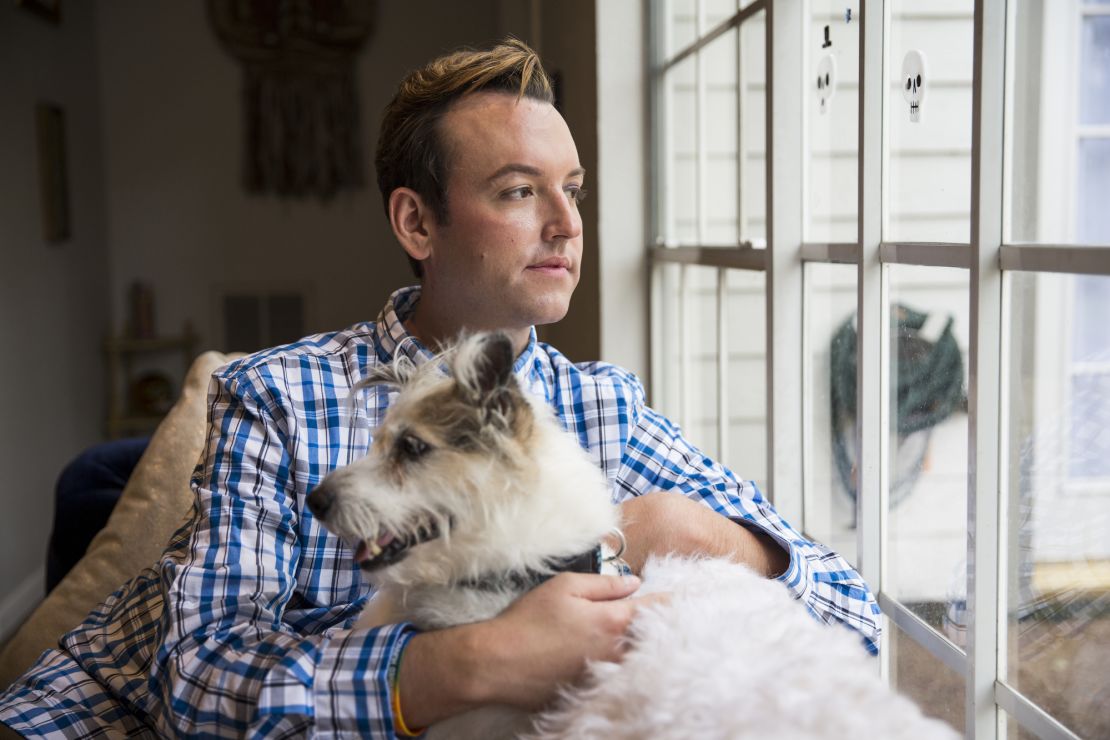
A trial for the upstream plaintiffs concluded in May, and closing arguments are scheduled for September in Washington. The next hearing in the downstream trial is scheduled for October.
Each trial is starting with a small group of plaintiffs who serve as “test cases” for the larger pool of property owners, said lawyer Rand Nolen, lead counsel for the downstream cases.
Sotolongo and Haines are not part of the test cases, but the outcome will affect them all the same, Nolen said.
Even if the property owners prevail, it will be a long time before they see a dime, given appeals, Nolen said.
“What’s at stake is the plaintiffs’ financial security for years to come,” he said.
“Many borrowed money to repair their homes. Some had to sell homes for pennies on the dollar. They suffered huge financial losses.”
Painful decisions after the waters recede
Sotolongo’s family made the decision to leave on Saturday night, as rain started seeping into their home.
She and her husband rolled up the carpets and told their three children to put their toys and belongings on their beds. Because no evacuation orders had been issued, they expected the damage to be minimal, she said. Their home was not in the floodplain and it had survived flooding in April 2016, making the Sotolongos think they did not need flood insurance.
Two weeks after fleeing, Sotolongo and her husband returned to the neighborhood, mucking through the swampy streets with waders and face masks. After taking stock of the damage inside their home, she was certain she wanted to find a new one, she said.
The front door was swollen shut. When her husband finally knocked it down and they walked through the mud-spattered rooms, the foul stench seeped into their face masks, she said. Pictures and books were scattered across the rooms. Colonies of mold enveloped the furniture and closets.
“It was like an earthquake combined with a rainstorm inside a house,” she said. “You can’t find the words because it’s like nothing you’ve ever experienced.”
When they crunched the numbers, it appeared as though they could not leave their house without taking a massive financial hit, she said. Because they had refinanced their mortgage years earlier, she said, they would still owe money if they sold the house. And because they did not have flood insurance, they did not stand to make enough money from the sale of their house to buy a new one.
Photos: Hurricane Harvey slams Texas
Living outside the floodplain also made them ineligible for different types of loans and federal grants, she said.
Sotolongo’s husband convinced her that rebuilding was the most financially viable option, she said, a decision that would end up testing their marriage.
“I resented him for it, and then I resented him even more when the work of dealing with gutting the house fell to me because he had to go back to work,” she said.
Disagreements over the daily barrage of decisions further strained their relationship, she said. Quibbles over decisions big and small – doors, windows, foundation – became symbolic referenda on their relationship, she said.
“It makes you question everything else – it’s like, do I know this person?”
The rift began to heal when they moved back into the house in February 2019, she said. But when she crunches the numbers now, moving probably would have cost as much as tearing the house to the studs and rebuilding.
And the trauma lingers, Sotolongo said.
When flooding returned to Houston in May, the family panicked, she said. They evacuated and stayed with her husband’s family until the flooding subsided. In the end, their home was unaffected, but she still worries for the future.
“Once you know what’s possible, that fear stays with you,” she said. “You realize you have PTSD.”
Learning to move on without forgetting
When the streets in his neighborhood were passable again after the flood, Haines painted a eulogy to his husband on the side of their home.
“My husband Captain Robert Haines of the 82nd Airborne Division perished in our home during Hurricane Harvey,” it read. “You were kind and selfless till the end. Good night my sweet teddy bear.”
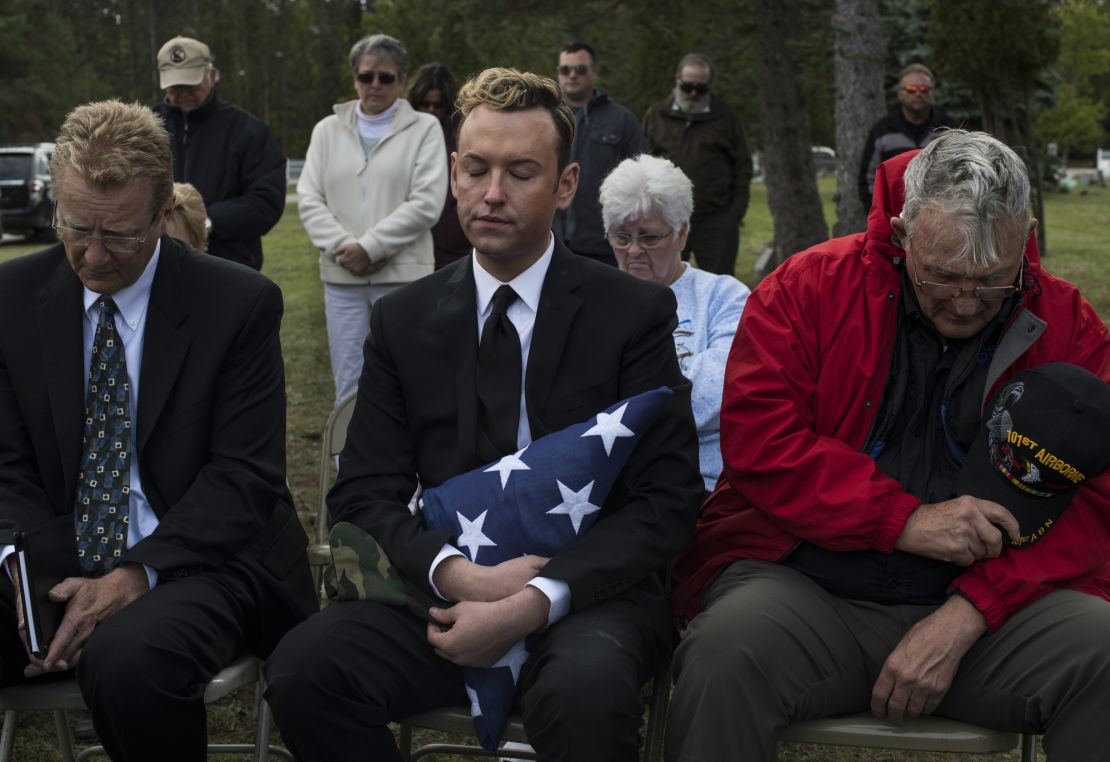
The media covered his story when he painted the home and joined the litigation. Initially, he relished the attention for how it validated the couple’s relationship after their families had rejected it for so long.
Thinking about life without Bob terrified him. Since they had gotten together when Kyle was young, Bob’s death left him alone for the first time in his adult life, contending with how to move on while keeping his late husband in his memory.
Instead of taking steps toward going to school or looking for a job, he said, he busied himself with managing Bob’s affairs and suppressed his loneliness with alcohol and sleeping pills.
“I was stuck in this role of widow,” he said. “But I didn’t know what to do next.”
He realized that, while the visits back to the house may have helped him grieve in the moment, they weren’t helping him move forward, so he stopped them. He sold the mortgage back to the bank – but that didn’t give him closure either, he said.
He needed to find other ways to say goodbye to Bob.
In September 2018, more than a year after Harvey, Kyle took one step toward closure by giving Bob the veteran’s burial he wished for, in his northern Michigan hometown.
Haines was by far the youngest person there, the only one apart from the pastor wearing a suit and tie among the casually dressed crowd. He’d never met most of the people in attendance, but he greeted the guests with warm hugs and handshakes as if they were old friends.
The ceremony concluded with a performance of taps and the presentation of the American flag to Haines, a piece of Bob that he still can’t bear to part with.
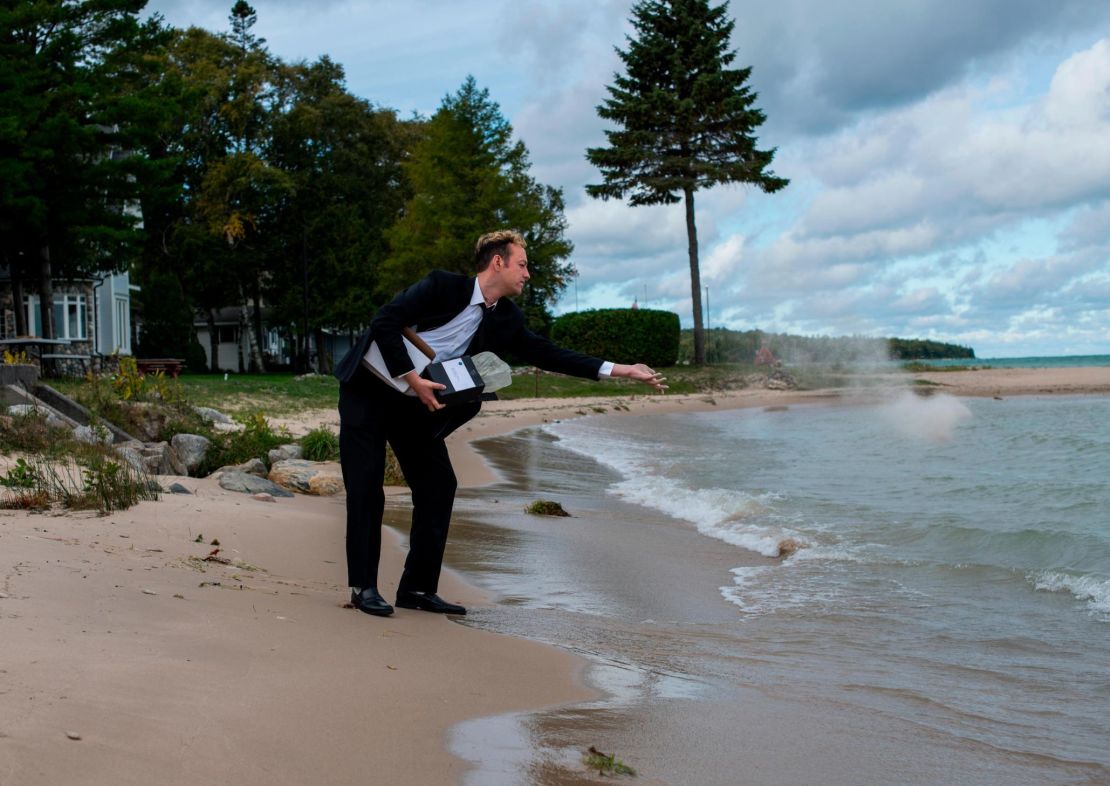
During the storm, floodwater wiped out nearly all of the couple’s possessions except for a few mementos that his husband had stashed in the attic, presumably while water was filling their home.
Kyle has a new home now, and every morning he walks past a framed black-and-white photo of Bob as a teenager on his family’s farm.
In Bob’s young face, Kyle says he sees the determination to forge his own path far from the rolling green pastures of Northern Michigan. He wonders what Bob, the man he considered his protector, would tell him to do.
“The hardest part of moving forward is Bob’s memory fading. I just don’t want him to be forgotten. It’s somebody I love. You just can’t erase somebody that you love out of your life,” he said.
“But I think I’ve inherited some of his strength.”













